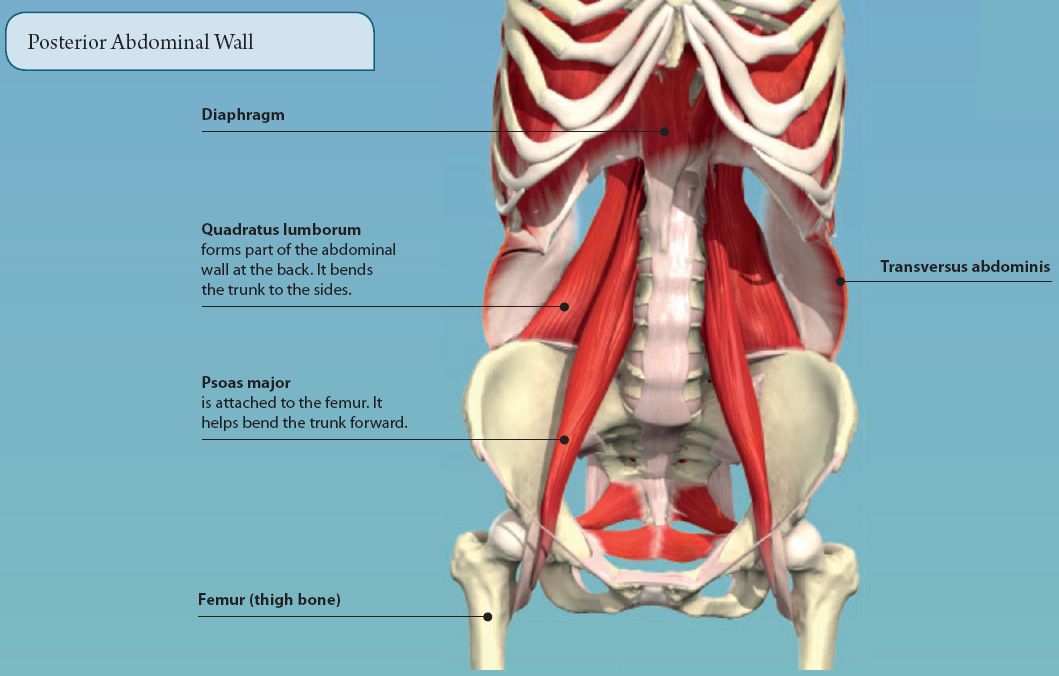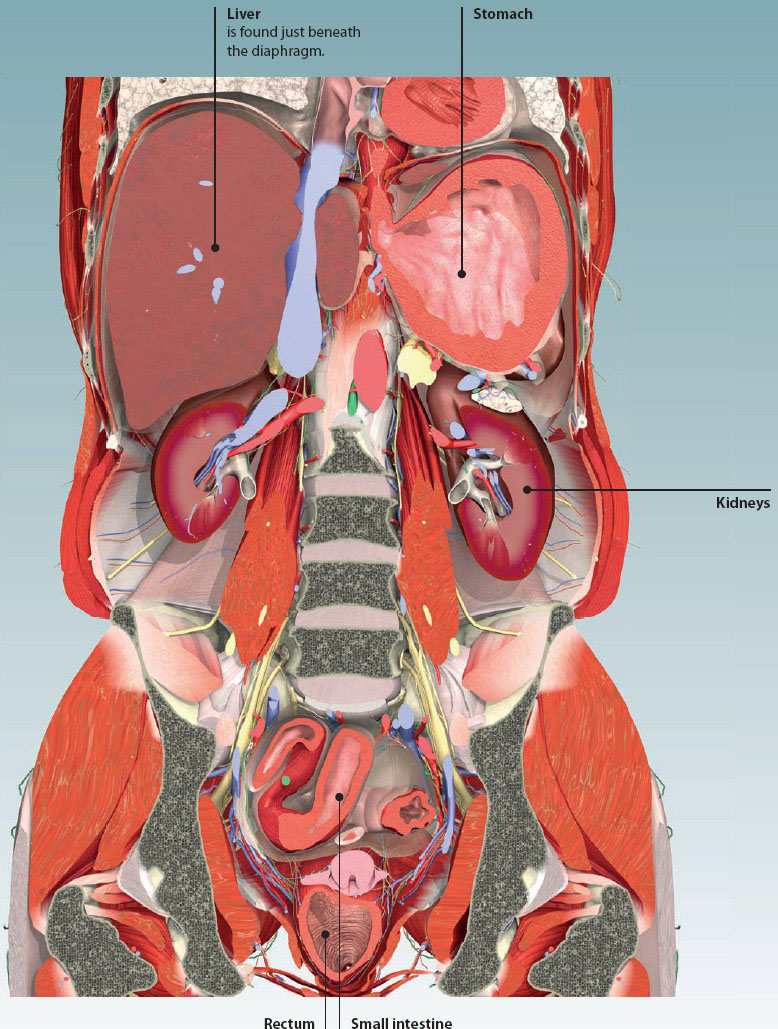The abdomen forms the lower part of the trunk. It extends from the diaphragm above to the pelvis below. The space inside the abdomen is called the abdominal cavity. It contains most of the organs of the digestive system, including the stomach, liver, pancreas, the small intestine, and part of the large intestine. The kidneys and ureters are found on the back wall of the abdomen.
The walls of the abdomen are mainly formed from layers of muscles, which can bend the trunk forward and from side to side. These muscles are also able to generate large changes in the size and pressure of the abdominal cavity. This helps with bodily functions such as breathing and going to the toilet.
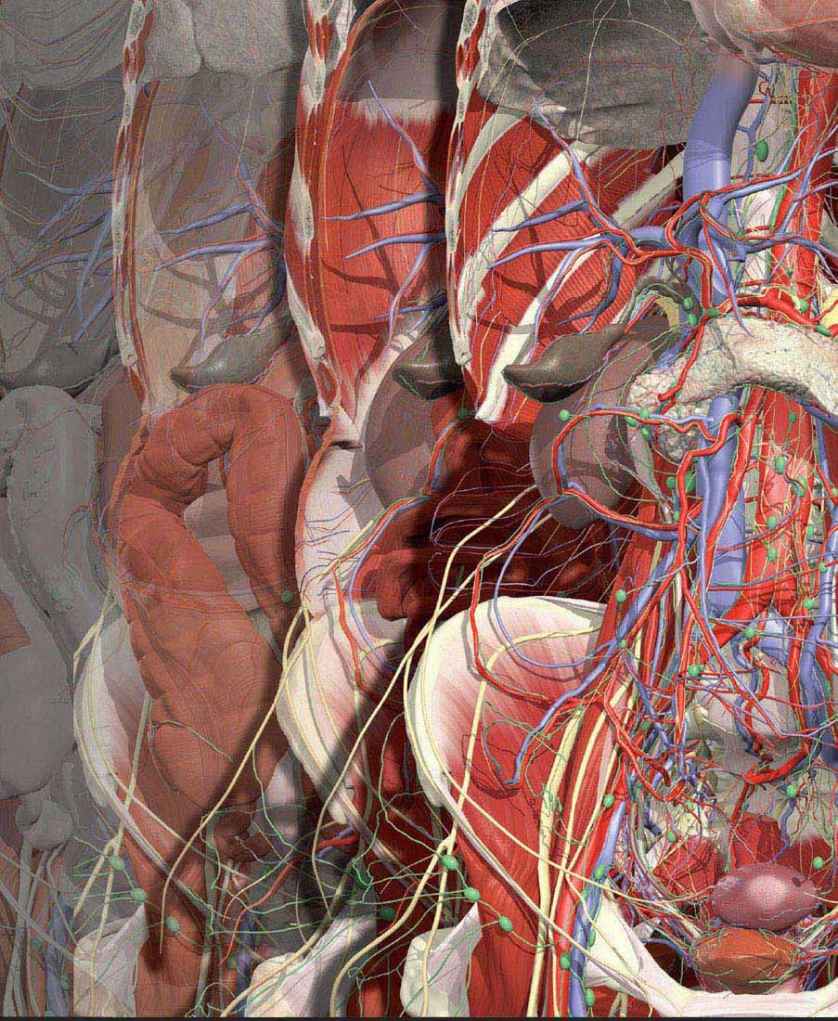
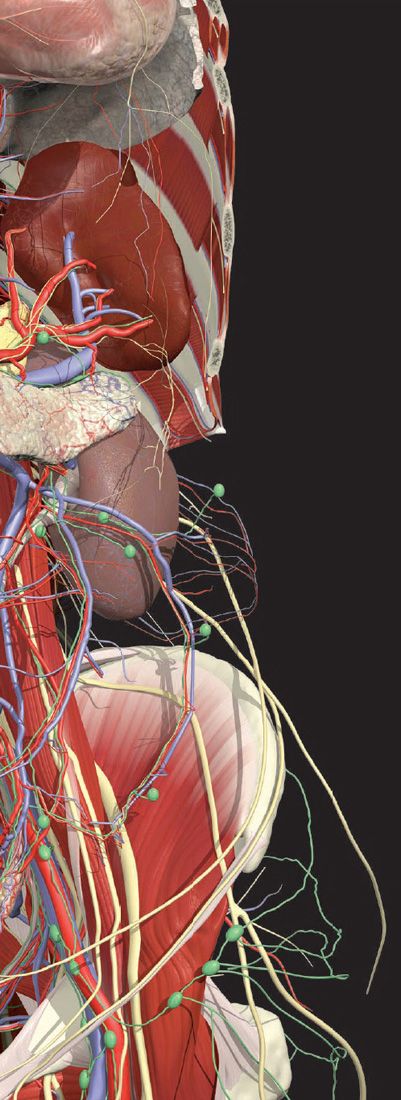
SURFACE ANATOMY AND CONTENTS
The surface of the abdomen can be divided by vertical and horizontal lines into anatomical regions or quadrants. These areas are associated with different underlying abdominal organs. This information can be used by doctors to accurately describe the position of abdominal pain, and also suggest possible diagnoses.
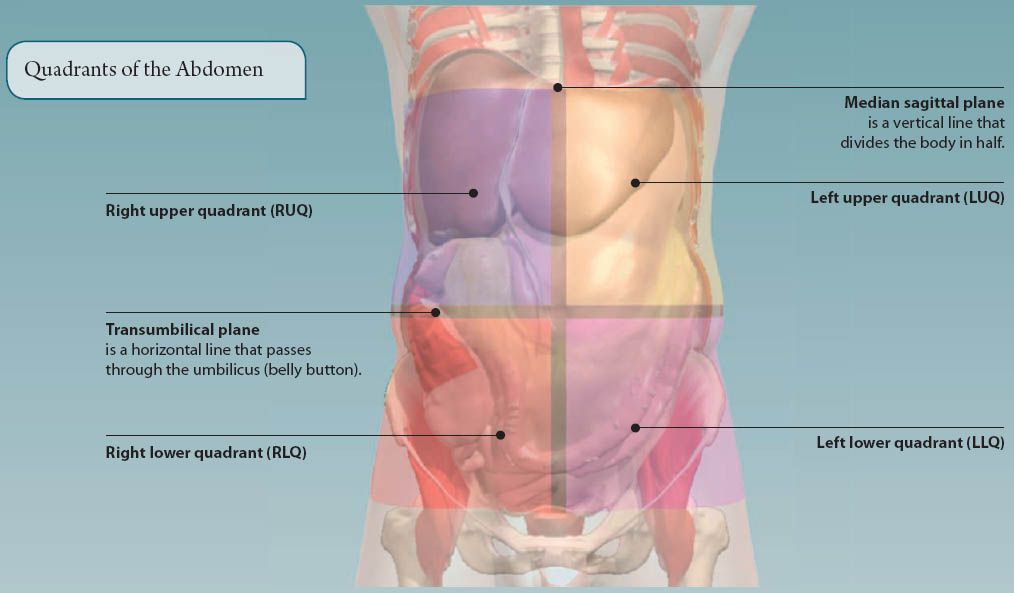
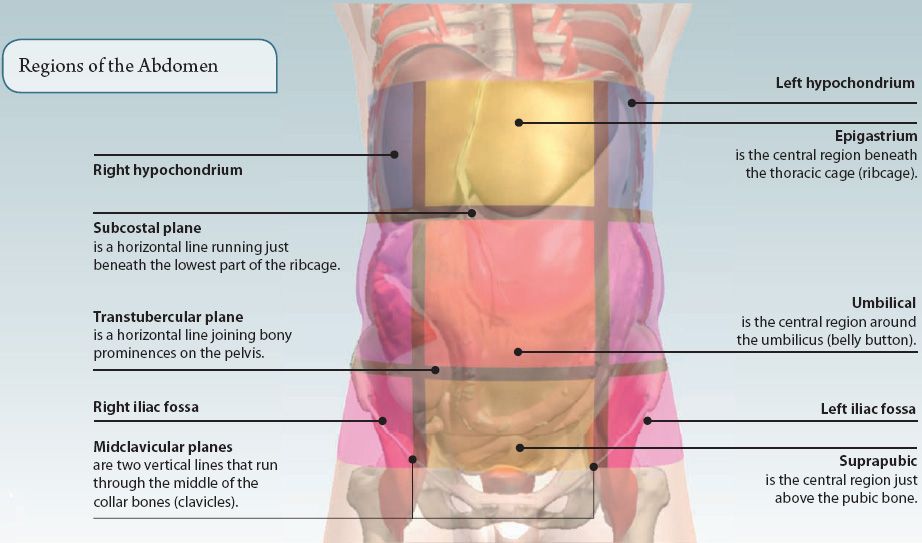
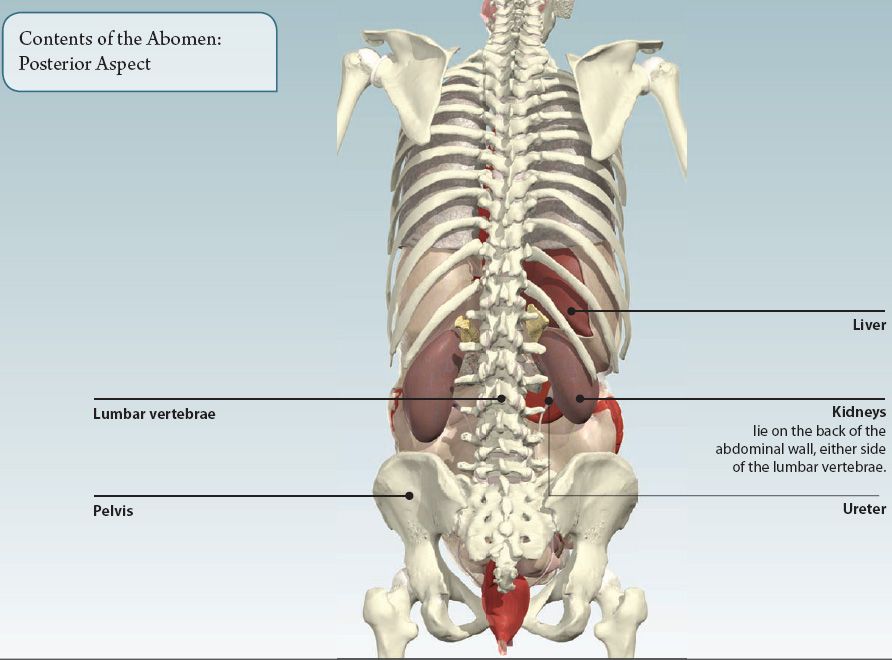
MUSCLES OF THE ABDOMEN
Muscles, and tendon sheets called aponeuroses, form a large part of the abdominal wall. They move the trunk, protect the abdominal contents, and have an important role in increasing the pressure in the abdominal cavity. This is vital for processes such as breathing, childbirth, vomiting, and going to the toilet.
Three flattened muscles—external oblique, internal oblique, and transverse abdominis—form the side walls of the abdomen. Their aponeuroses combine together at the front to enclose the rectus abdominis muscle.
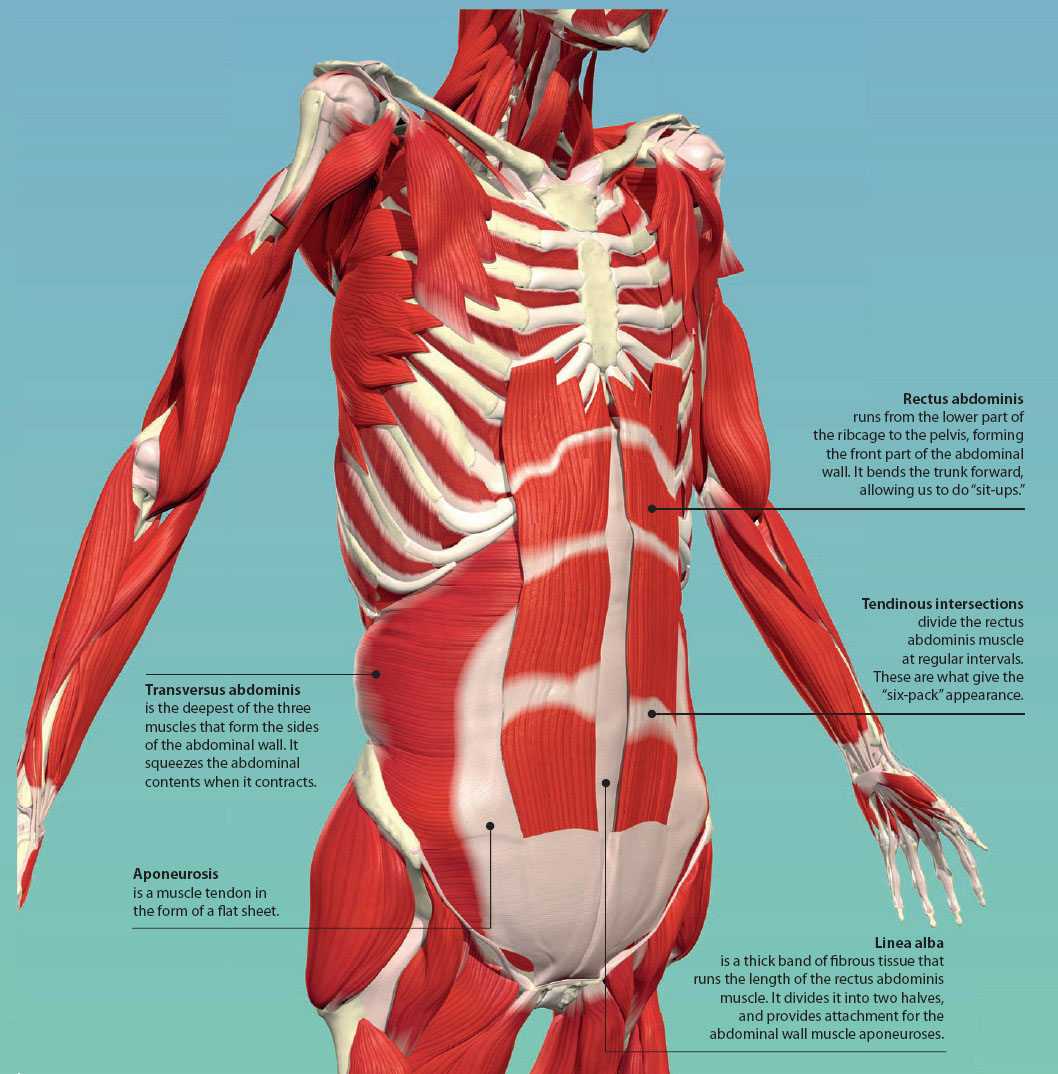
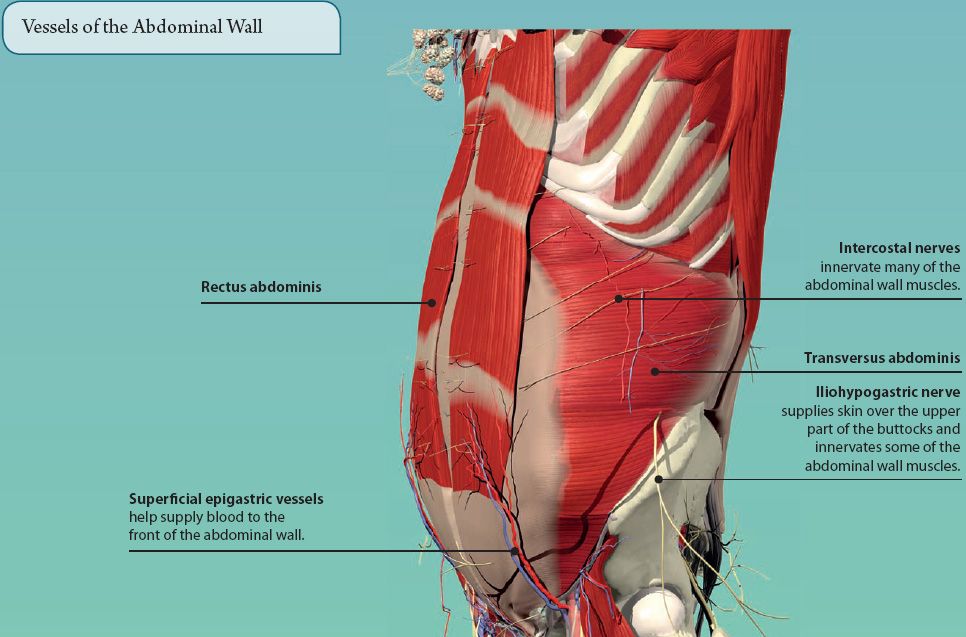
NEUROVASCULAR STRUCTURES OF THE ABDOMEN
The abdominal organs are supplied with blood from branches of the abdominal aorta. The hepatic portal system allows nutrient rich venous blood from the digestive system to be processed by the liver, before draining into the inferior vena cava.
The lumbar plexus is a collection of nerves found at the back of the abdomen. These supply some of the skin of the thigh, leg, and genital region, as well as innervating some of the muscles of the thigh and abdomen.


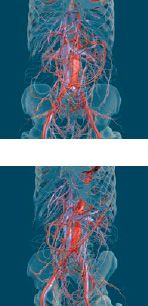
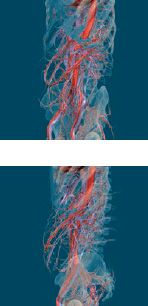
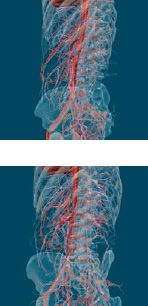
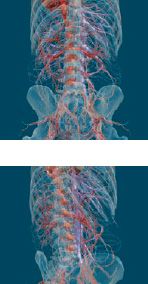
CROSS SECTIONAL IMAGES THROUGH THE ABDOMEN
Viewing the abdomen in different anatomical planes allows us to see how the various organs and structure are arranged and related to one another.
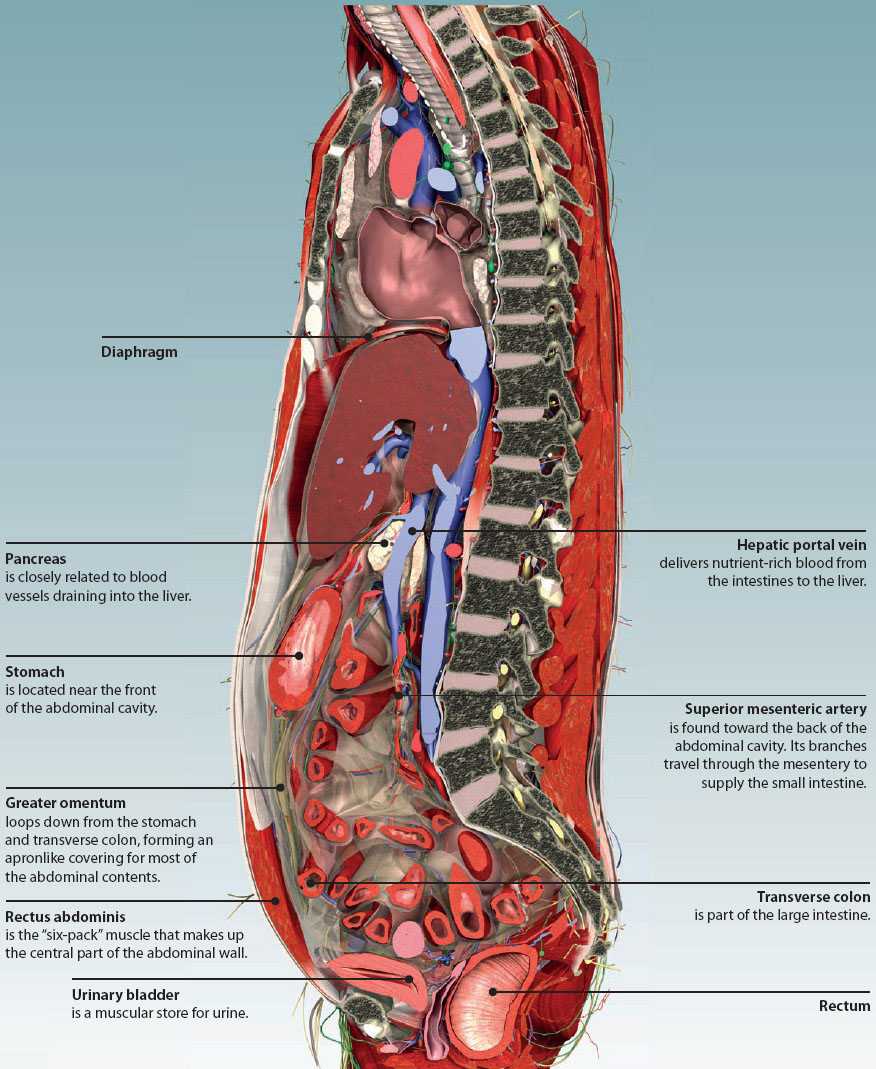
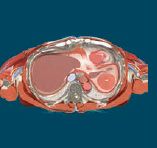

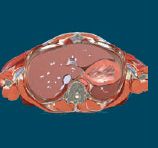
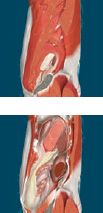

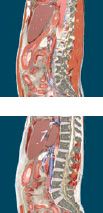
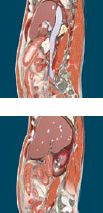
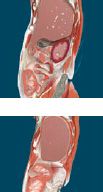
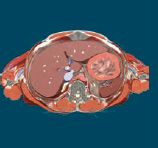
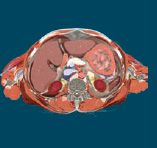

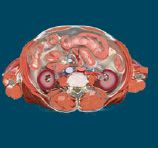
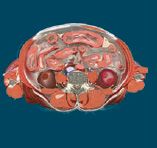


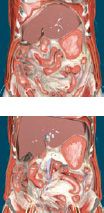



PERITONEUM
Stay updated, free articles. Join our Telegram channel

Full access? Get Clinical Tree



